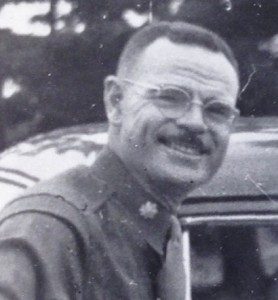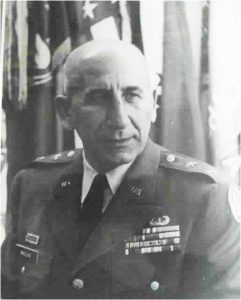
In its long history, Oklahoma State University’s Air Force Reserve Officer Training Corps Program (ROTC) has produced many great leaders including some who were POWs in North Vietnam and one who was missing in action but will never be forgotten.
The OSU ROTC program and alumni and other ROTC programs in Oklahoma will be inducted into the Oklahoma Military Hall of Fame on Oct. 21 at the Embassy Suites Hilton in Norman. During the banquet, a ceremony will be held to recognize and remember America’s Prisoners of Wars and those listed as Missing in Action (MIAs). A missing man table will be set up with six empty chairs representing Americans from the Army, Marine Corps, Navy, Air Force and Coast Guard and civilians who were or are missing. Captain Neil Stanley “Cherokee” Bynum, a native of Vian, is OSU’s MIA.
He was a Weapons System Operator riding in the back seat of a plane piloted by Captain Gray Warren on Oct. 26, 1969. The aircraft crashed. Gray was reclassified from MIA to killed in action on Oct. 26th. Bynum was continued in MIA status until May 13, 1976, when the Secretary of the Air Force approved a “Presumptive Finding” of death.
The former ROTC graduates who were POWs are: Lt. Col. William Schwertfeger, who was born in Enid and grew up in Medford; and Col. William H. “Bill” Talley, who was born in Sayre. One other former POW is Lt. Col. Dick Francis, who graduated from OSU but was not in ROTC.
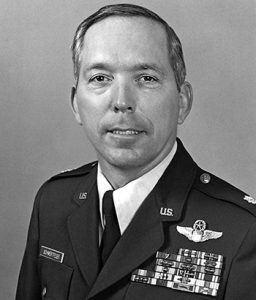
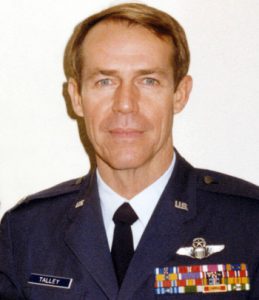
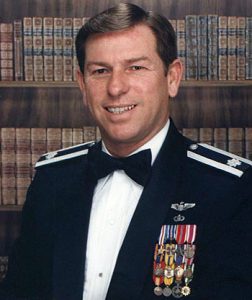
Schwertfeger received three Silver Stars. One was for leading an air strike force deep into hostile territory Feb. 16, 1972. He flew through anti-aircraft fire for more than two hours, locating targets and directing air strikes. He was honored in 2015 as OSU Alumni of the Year. He also is being honored this month as 2017 Air Force ROTC Alumni of the year.
Talley flew 151 combat missions in Vietnam. On May 11, 1972, he was forced to eject over enemy territory. He was a POW for 322 days before repatriation on March 28, 1973.
Talley was awarded two Distinguished Flying Crosses for Valor. One was for suppressing enemy surface-to-air missile sites and radar controlled antiaircraft artillery on April 21, 1972. He repeatedly attacked the sites to protect an American air strike force. He remained in the area after he used all his ammunition.
Francis was shot down over North Vietnam on May 11, 1972, and held prisoner for 275 days. Francis was awarded The Silver Star for leading a flight on a special combat mission over Hanoi, North Vietnam.
Other notable OSU ROTC graduates are Maj. Gen. S.T. Ayers and Ray Booker.

Ayers graduated from Arkansas Polytechnic University in 1942 and Oklahoma A&M(now OSU) in 1951. He is one of the people who helped found the Oklahoma Military Hall of Fame, said Maj. Gen. Douglas O. Dollar, who is a founder of the organization.
Ayers enlisted in the Air Force Reserve in 1943 and was called to active duty in 1944.He was commissioned as a second lieutenant in 1950. He served as mobilization assistant to the Deputy Chief of Staff for Logistics and Engineering at the Pentagon. He also served as a mobilization assistant for to the Deputy Chief of Staff for Logistics and Engineering at the Pentagon. He also had a career in petroleum geology.
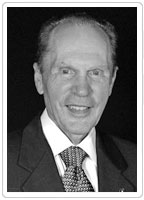
Booker graduated from Oklahoma A&M in 1957 with a degree in mechanical engineering. He is founder of Aeromet, Inc. and Aviation Technologies in Tulsa. Now retired, he was a certified Airline Transport Pilot. He was a cadet in Air Force ROTC at OSU and was inducted into the OSU Alumni Hall of Fame in 2012. He was commissioned as a second lieutenant and attended Pennsylvania State University where he received a master’s degree in 1962 and a Ph.D., both in meteorology.

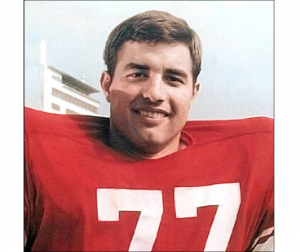 Bob was an All-American offensive lineman at the
Bob was an All-American offensive lineman at the 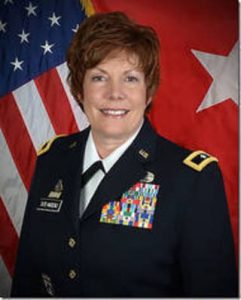
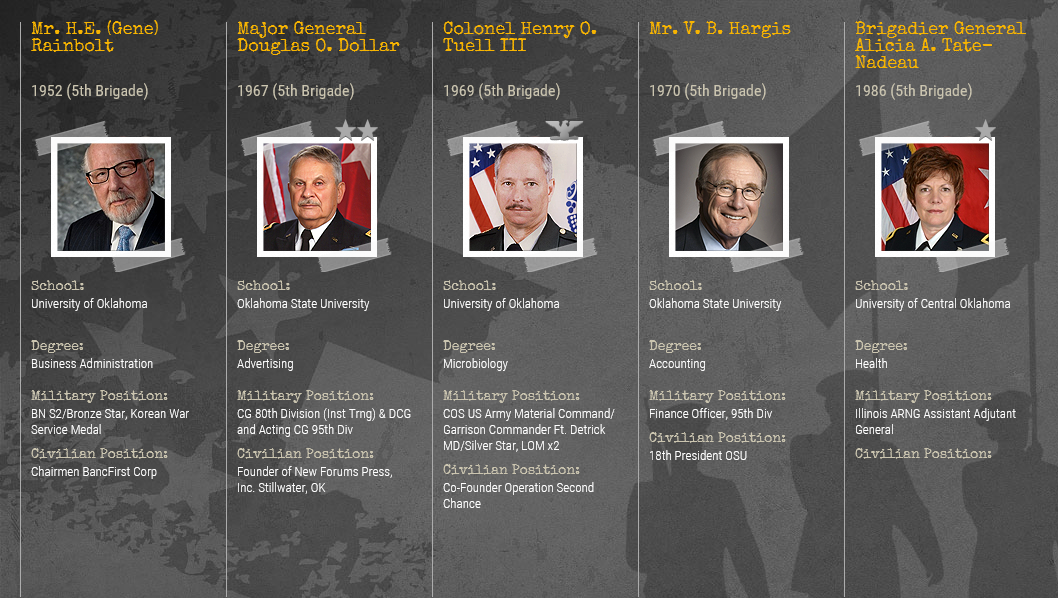
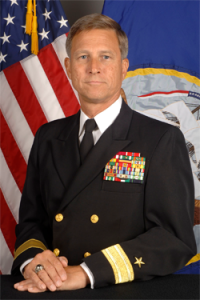 More than 80 graduates from Oklahoma State University have served as generals and admirals in the military service since World War I, but retired Rear Admiral Greg Slavonic (’71) could be the first to publish the leadership insights he learned along the way in a book titled Profiles in Patriotic Leadership.
More than 80 graduates from Oklahoma State University have served as generals and admirals in the military service since World War I, but retired Rear Admiral Greg Slavonic (’71) could be the first to publish the leadership insights he learned along the way in a book titled Profiles in Patriotic Leadership.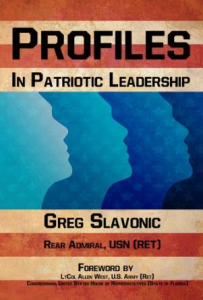 The admiral’s early view of leadership started to take shape when he was assigned to work 12-hour days in the mess hall of the aircraft carrier USS Constellation, which was stationed off the coast of Vietnam in the Tonkin Gulf.
The admiral’s early view of leadership started to take shape when he was assigned to work 12-hour days in the mess hall of the aircraft carrier USS Constellation, which was stationed off the coast of Vietnam in the Tonkin Gulf. 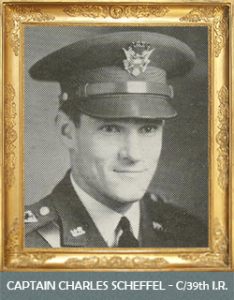 When Charles Scheffel was a youngster in Enid during the Great Depression, he was destined to become a soldier, but he didn’t know it yet.
When Charles Scheffel was a youngster in Enid during the Great Depression, he was destined to become a soldier, but he didn’t know it yet.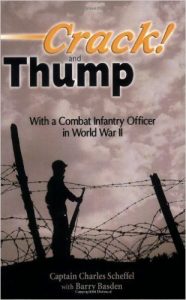 Scheffel had no intention of taking anything more than the mandatory ROTC courses, he said. ROTC turned out to help him not only to get his degree at OSU but to be an infantry leader in combat. He took basic ROTC three times a week. America had the draft and a student could be drafted from college unless he was in ROTC.
Scheffel had no intention of taking anything more than the mandatory ROTC courses, he said. ROTC turned out to help him not only to get his degree at OSU but to be an infantry leader in combat. He took basic ROTC three times a week. America had the draft and a student could be drafted from college unless he was in ROTC.
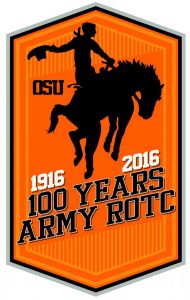 The Reserve Officer Training Corps was created nationally in 1916 and Oklahoma A&M College (now Oklahoma State University) wasted little time establishing an Army ROTC program in the same year on the Stillwater, Ok., campus.
The Reserve Officer Training Corps was created nationally in 1916 and Oklahoma A&M College (now Oklahoma State University) wasted little time establishing an Army ROTC program in the same year on the Stillwater, Ok., campus.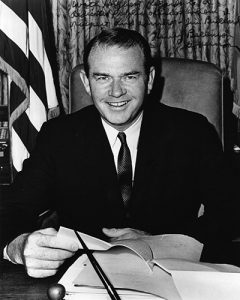
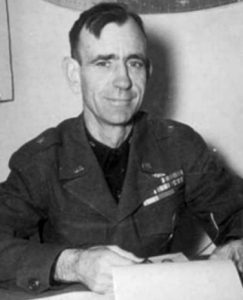
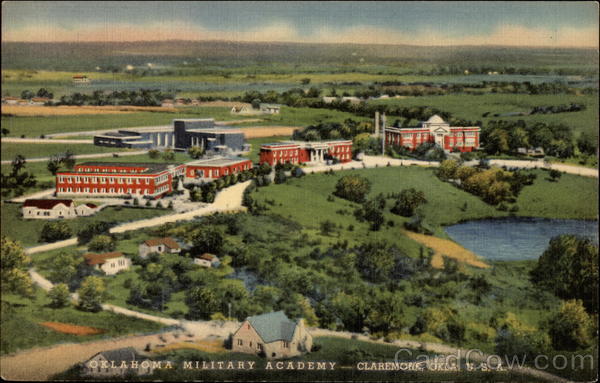
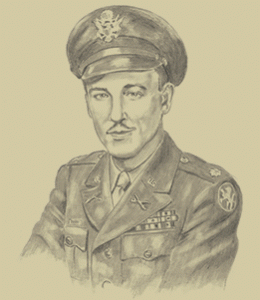 Lt. Col. Edwin Price Ramsey
Lt. Col. Edwin Price Ramsey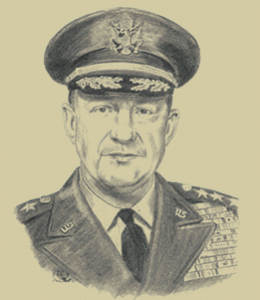 While at OMA, Potts was named a Distinguished Honor Graduate of OMA and the outstanding ROTC graduate by the U.S. Reserve Officer’s Association.
While at OMA, Potts was named a Distinguished Honor Graduate of OMA and the outstanding ROTC graduate by the U.S. Reserve Officer’s Association.

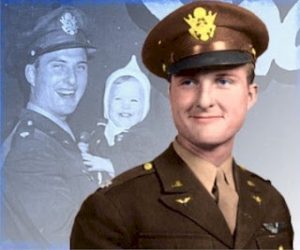
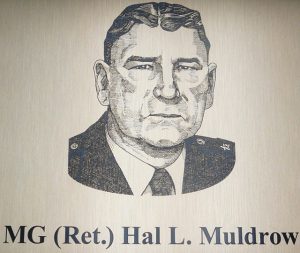 Muldrow, who lived in Norman, eventually would command the 45th. Funk, of Oklahoma City, would be a Colonel and would make the Army his career.
Muldrow, who lived in Norman, eventually would command the 45th. Funk, of Oklahoma City, would be a Colonel and would make the Army his career.